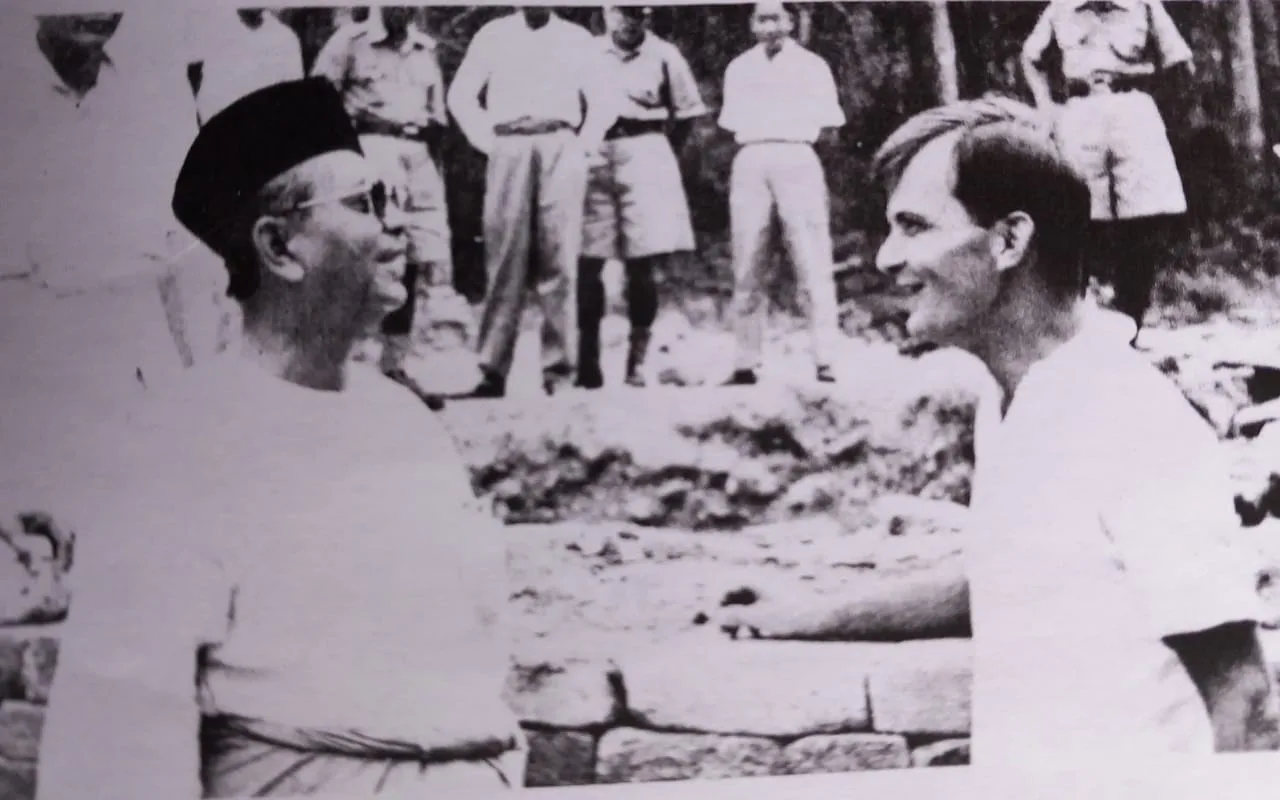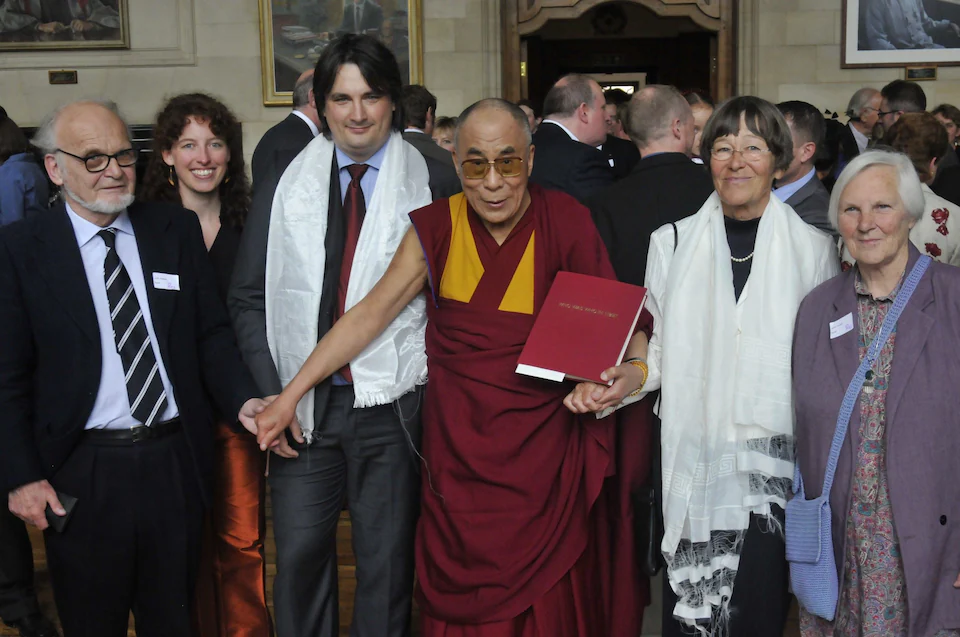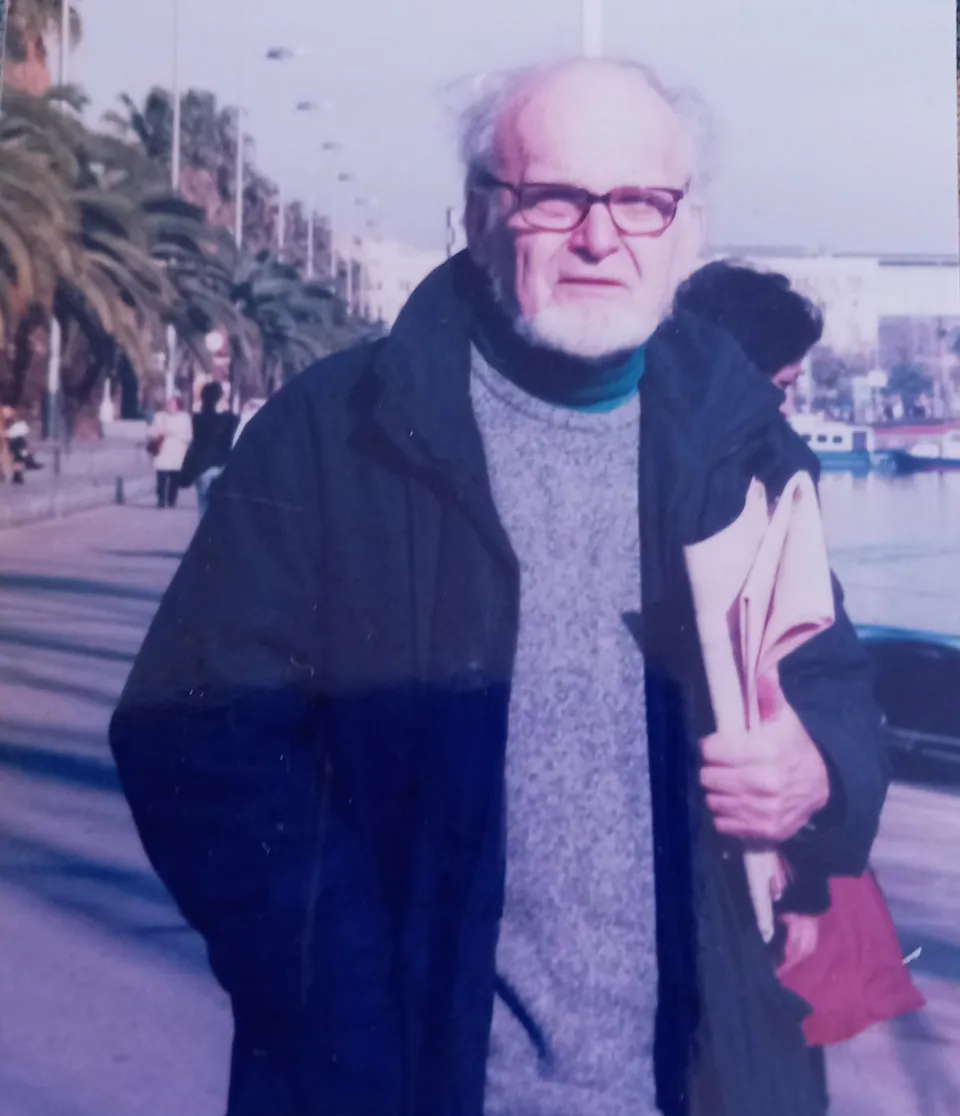His research questioned the Indian version of events and despite his scholarly reputation many of his works were banned in India

Alastair Lamb, who has died aged 93, was a diplomatic historian whose work on the history and genesis of the dispute between India and Pakistan over Kashmir challenged the conventional narrative.
Lamb was among the first academics to examine the British archives on Kashmir, and was widely respected for his meticulous research, attention to detail and generosity to other scholars. Some felt, however, that his work was marred by an anti-Indian bias; indeed, much of it was banned in India and he himself was convinced that in the 1960s the government of India had been instrumental in denying him a more prestigious academic post than the ones he achieved.
The background to Lamb’s researches on Kashmir was the desire of Maharaja Hari Singh (Hindu ruler of Jammu and Kashmir at the time of Partition) for independence for his Muslim-majority state. In August 1947 he proposed “standstill agreements” with both India and Pakistan, hoping to buy time by maintaining the administrative relationship that had existed with the British.
Pakistan accepted the agreement. India declined, stating that Kashmir should send representatives to Delhi to negotiate; no representative was sent. But according to Indian accounts, the “standstill” with Pakistan was breached on October 22 by a massive intrusion into Kashmir by tribal Pathans, assisted by Pakistani soldiers in civilian clothes, who carried out massacres and plunder.
With his forces unable to cope, on October 25 the Maharaja fled Srinagar and requested military assistance from India. India agreed on condition that the Maharaja signed an Instrument of Accession (IoA), which, according to the Indian version, he did on October 26. Indian forces rushed into Kashmir the following day.
The resulting Indo-Pakistani War of 1947-8 ended with a UN-mediated ceasefire along what is now known as the Line of Control.
In his studies of the period, Crisis in Kashmir: 1947-1966 (1966), Kashmir: A Disputed Legacy, 1846-1990 (1991), Birth of a Tragedy, Kashmir 1947 (1994) and Incomplete Partition: The Genesis of the Kashmir Dispute 1947-1948 (2002), Lamb showed that the Maharaja could not in fact have signed the IoA on October 26, as he was then on the run, travelling by road to Jammu (a distance of more than 350 km). There was also no evidence of contact between him and Indian emissaries on that day. The earliest he could have signed was on the afternoon of October 27 – after Indian troops had already assumed control of Srinagar.

Lamb also questioned the justification given for the Indian military intervention. The reality, Lamb wrote, was that a serious but indigenous revolt had broken out in the Poonch area of Kashmir, to which the Maharaja had responded with a massacre in Jammu in which at least 200,000 Muslims were killed. It was this that had stirred the Pathan tribals to cross the border.
Lamb supported charges by Pakistan that Lord Mountbatten, the last Viceroy of British India and briefly the first Governor-General of independent India, had conspired to award to India certain Muslim majority areas in the Punjab, originally scheduled to go to Pakistan under a blueprint prepared by the previous Viceroy, Lord Wavell, so as to give India access to Kashmir. Mountbatten, he claimed, had a pro-India bias and was guilty of prevarication, if not outright lying by claiming he had had nothing to do with the final award.
Lamb’s arguments bolstered Pakistan’s claims that the accession was “fraudulent”, that the Maharaja acted under “duress”, and that he had no right to accede to India at a time when a standstill agreement with Pakistan was in force. New Delhi, Lamb concluded, “had no valid legal ground or moral justification for accession” in Kashmir.
Many historians accepted Lamb’s finding that the Maharaja probably signed after Indian troops had landed in Srinagar. But Srinath Raghavan, a senior fellow at the Carnegie Endowment for International Peace, felt that in Birth of a Tragedy, Lamb had “overreached” himself by claiming that the Maharaja might not have signed the IoA at all, overlooking letters in which the Maharaja indicated that he had.
Meanwhile, the BBC journalist Andrew Whitehead, author of A Mission in Kashmir, in which he described a notorious massacre by Pathan tribesmen in the town of Baramulla, suggested Lamb had diminished his own authority with the claim that “whatever happened in Baramula [sic] … is as nothing when compared to what has happened to Kashmiri men, women and children at Indian hands since 1989.”

Alastair Lamb was born on January 9 1930 into a diplomatic family in Harbin, China, the only child of Lionel (later Sir Lionel) Lamb and his Australian-born wife Jean, née MacDonald. His father, a Sinologist who would end his career as Ambassador to Switzerland, was then serving in the British consular service in China where he and his wife were interned by the Japanese from December 1941 to August 1942.
Luckily they had managed to get their son away to Britain to stay with his paternal grandfather, Sir Harry Lamb, also a diplomat, in Sidmouth.
From Harrow, Alastair went up to King’s College, Cambridge, where he took a degree in History, followed by a doctorate on the British Indian border between the era of Warren Hastings and the 1904 Younghusband expedition to Tibet. This was published in 1960 as Britain and Chinese Central Asia: The Road to Lhasa 1761 to 1905 (revised and republished in 1986 as British India and Tibet: 1766-1910).
In 1959 Lamb moved to Malaya, where for nine years he was a reader of history at the University of Malaya and where a side interest in archaeology led him to investigate Hindu and Buddhist sites in Kedah and southern Thailand. This was followed by three years as a senior fellow in the department of history at the Australian National University and four as professor of history at the University of Ghana.
During the 1970s he spent some time working in the office of the Pakistan leader Zulfikar Ali Bhutto; during the 1980s he was a reader of history at Hatfield Polytechnic.
As well as his books on Kashmir, Lamb was known for his studies of the China-India border issues, sparked by the Sino-Indian war of 1962. His The China-India Border (1964) was expanded in 1966 into a two-volume work entitled The McMahon Line.

This referred to the boundary between Tibet and British India agreed at Simla in 1913-14 between the British and the Tibetans. The line mainly followed the Himalayan watershed, with the exception of the Tawang Tract which, according to topography and Buddhist culture, should have been on the Tibetan side, but for strategic and security reasons ended up on the Indian side. By the time of Independence, however, the British had not pushed their administration up to the McMahon line and Tawang was still under Tibetan control.
China had never recognised the Simla agreement and argued that the Tibetans had no authority to sign it as Tibet was part of China, a claim it pursued by invading Tibet in 1950.
Though Lamb never supported China’s claim to Tibet, in his study of the background to the Sino-Indian War of 1962, he controversially portrayed India as the main aggressor, arguing that the deterioration in relations began in February 1951 with India’s “unilateral annexation” of the Tawang Tract – leading to charges of pro-China bias, one critic accusing him of an “outright partisan attempt at demolishing the Indian case and thereby lending countenance to, and buttressing, the Chinese claims.”
Lamb was a Fellow of the Society of Antiquaries of London and of the Royal Asiatic Society. His other books were Asian Frontiers (1968), The Sino-Indian Border in Ladakh (1977), and Tibet, China & India 1914-1950 (1989).
As a result of his research on Tibet, he and his wife were invited, with relatives of British officials and travellers who had visited Tibet before 1950, to an audience with the Dalai Lama at Rhodes House, Oxford, in 2008. In 2016 Lamb was delighted when two of his books were translated into Chinese Mandarin.
In 1954 he married Venice Havinden, daughter of the graphic designer Ashley Havinden. She survives him with their two sons and a daughter.
Alastair Lamb, born January 9 1930, died March 15 2023
Note: The above article was originally published by The Telegraph on April 06, 2023.
